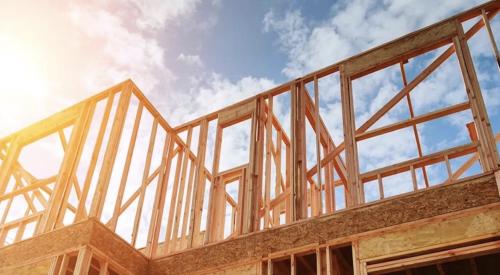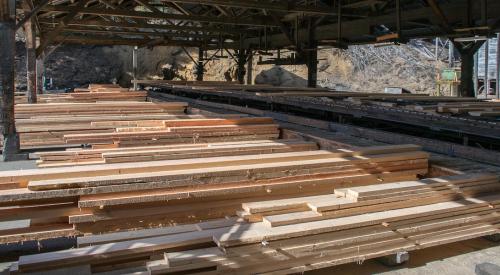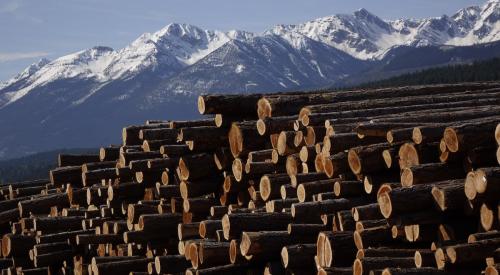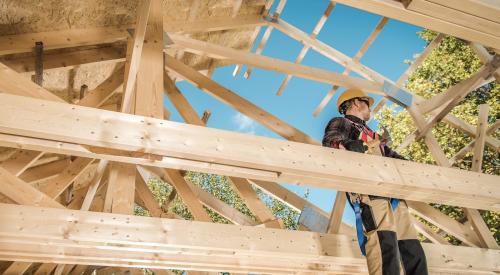Builders and housing economists worked themselves into a lather over the harm a 27.2% duty on Canadian framing lumber could do to U.S. housing affordability. But in late May, a week after the tariff took effect, many were scratching their heads over a lack of evidence that a price spike looms in the lumber market.
“We’ve actually seen a small decline,” reports John Bartley, chief financial officer at Gibraltar Homes in Sarasota, Fla. Rick Puzzitiello, a small custom builder in suburban Cleveland, concurs. “Our last buy, we got lumber prices that were a little lower, and we recently asked for prices from four suppliers. They’re not all in yet, but the first two seem a little lower again.”
Ralph Drees of Kentucky-based Giant The Drees Co. says he has seen no spike in any of his markets, including Cincinnati, Dallas and Washington, D.C. “You know that the tariff is having an effect, but there’s a lot more to lumber pricing than this tariff,” he says. “Commercial and retail construction seem to be off. That may be taking the pressure off demand.”
“There’s been no upward pressure on lumber prices yet,” NAHB economist Michael Carliner acknowledges. “That may be because of a flood of duty-free shipments from Canada into the U.S. in the month before the tariff was imposed. That bubble of excess supply could have a dampening effect on prices. But it won’t last forever. We expect prices to move up this summer.”
But futures markets show no hint of an increase, and lumber dealers seem willing to lock in prices for their best customers 30 to 90 days out. Some large builders report locking in lumber prices for up to six months. “I’m surprised by that,” Carliner says. “If home building activity stays strong, I believe you’ll soon see futures start to climb.”
Gainesville, Fla., builder Barry Rutenberg, who heads the NAHB’s Building Materials Task Force, is equally mystified. “Nobody really knows where prices are going,” he says. “We know the Canadians shipped a lot of lumber during that 30-day window of opportunity. But we think a large portion of that excess supply is being held out of distribution channels.
“There’s no upward tick in lumber prices, but light-gauge steel [used for residential framing] is up, and we think that’s a reaction to the tariff. Normally, lumber prices fall cyclically in winter. It could be we won’t see the spike we expect until after that cycle, sometime next spring.”
The U.S. International Trade Commission’s decision to impose the 27.2% tariff on Canadian softwood lumber triggered protests across Canada, which has taken its case to the World Trade Organization and a hearing panel of the North American Free Trade Agreement.
The first hint of how those bodies might rule will come in late June or early July when the WTO will give both federal governments a confidential memo on its preliminary decision. “Whichever side seems to be winning will stiffen,” Rutenberg predicts. “It’s not likely we’ll see serious discussions of any kind until the parties get that memo.”
So where does this leave builders trying to plan strategies for the next six months?
“The distribution chain for lumber is ridiculously complicated and inefficient,” says David Hill, chairman of Giant Kimball Hill Homes in Rolling Meadows, Ill. “What I’ve discovered is that it’s beyond the capability of anyone to factor all the variables.
“The industry is operating at a pretty steady clip across the country. We no longer see the weird variations where demand is way up in one region and way down in another. That’s probably contributing to the price stability. But three months from now we could see a completely different scenario. All I know is that every attempt to hedge lumber prices has failed.” Not all builders are willing to wait for the tariff to wreak havoc. Giants Pulte Homes and Centex Homes joined an advertising campaign conceived by the National Lumber and Building Material Dealers Association called “Friends and Allies for More Than 100 Years.” The aim is to push the two governments toward a settlement.
“Our calculations support NAHB’s position that the tariff’s impact is likely to be $1,500 a house,” says Neil Devroy, Centex’s vice president of investor relations. “It makes sense to do something to push for a compromise before our entire economic recovery is threatened.”












